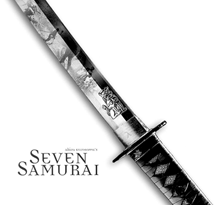November 15, 2006 – Today, I’ve decided to trump Kaeho at his own game. Having considerable training in martial arts myself, I’ve noticed many strategies and techniques that have improved my martial arts training that are applicable to the art of investing. After all I named my blog the Zen of Investing for this very reason. So today, I’m going to branch out a little and cover how martial arts has made me a better investor.
In the seminal book about martial arts strategy, “The Book of Five Rings” by Miyamoto Musashi, the author mentions that teaching any more than five cutting techniques for the sword is all for show and will actually detract from your progression in mastering the sword. He said there are only a finite number of ways to kill someone with a sword and that he “fails to see the reason for practicing hundreds of little tricks to do it. It is better to be the master of a few techniques than the student of many.”
 Yet so many martial art students fail to realize this. Perhaps it is Western civilization’s obsession with the Wall Street Gordon Gecko theme of “Greed is Good” that leads them to believe that more is also better. One thing I have been blessed with in martial arts is to have superior masters. Masters that realized that preparing the spirit is as important as building technique and strengthening the body. And my senseis and sifus have always instilled in me the philosophy of “better to be a master of few techniques than an average practitioner of many.”
Yet so many martial art students fail to realize this. Perhaps it is Western civilization’s obsession with the Wall Street Gordon Gecko theme of “Greed is Good” that leads them to believe that more is also better. One thing I have been blessed with in martial arts is to have superior masters. Masters that realized that preparing the spirit is as important as building technique and strengthening the body. And my senseis and sifus have always instilled in me the philosophy of “better to be a master of few techniques than an average practitioner of many.”
Yet, whenever I have trained friends, even though sometimes I give them advanced techniques that may be beyond their grasp, I have yet to meet a single one that takes my advice of “Go practice this technique a hundred times every day for several months now.” They always get bored quickly and think that they understand a technique when there is no way they could ever use it effectively in real combat, yet they desire to learn something different.
Perhaps it is the immediate gratification, attention-deficit-disorder, get-rich-quick, high-payoff-with-no-effort society that we live in today that instills this type of mentality in people. It is this very mentality that also encourages people to quite foolishly adopt a Modern Portfolio Theory approach to diversification in their portfolios.
Diversification is the jack-of-all-trades approach in investing. Because you spread your portfolio so thin across so many industries, you become the master of no asset classes, and even if you own an asset class that rises a phenomenal 40% in one year, you really don’t benefit that much because you have diluted the performance of that outperforming asset class so much. In other words, as an investor, the diversification approach leads you to become the master of nothing. Diversification is a distraction that prevents your progression of learning in investing.
Coming next week: Part II of “Master of Few Not a Student of Many.
__________________
J.S. Kim is the founder and Managing Director of maalamalama, a comprehensive online investment course that uses novel, proprietary advanced wealth planning techniques and the long tail of investing to identify low-risk, high-reward investment opportunities that seek to yield 25% or greater annual returns.